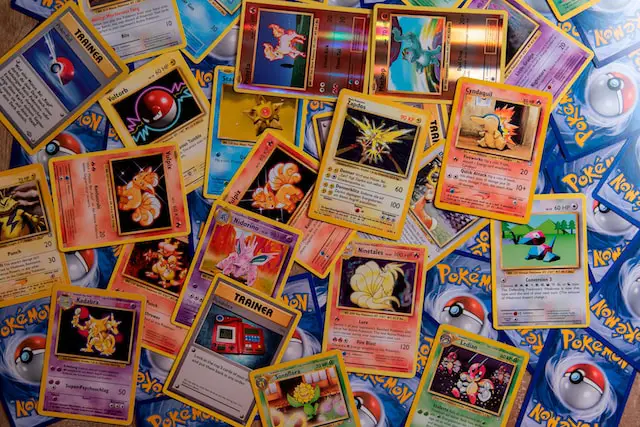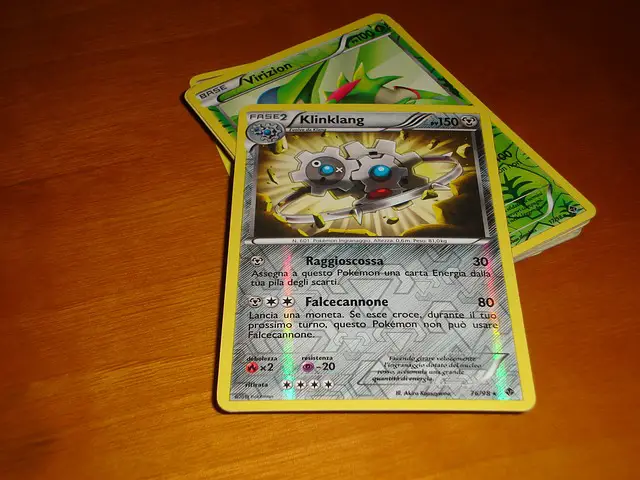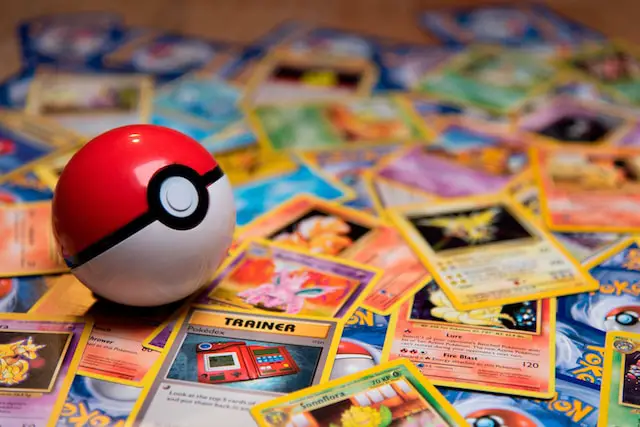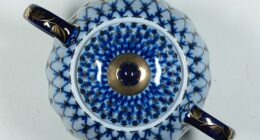Real Pokémon cards are printed on high-quality paper with a glossy finish. The edges of real Pokémon cards are also usually smooth. Fake Pokémon cards, on the other hand, are often printed on lower-quality paper and can have rough or jagged edges.
What are Pokémon cards?
(Photo by Thimo Pedersen on Unsplash )

Pokémon cards are collectible cards that feature characters from the Pokémon video game, anime, and manga series. The first Pokémon cards were released in Japan in 1996, and they were later released in the United States in 1998. There are currently over 7,000 different Pokémon cards in existence.
How to tell the difference between fake and real Pokémon cards
There are several ways to tell the difference between fake and real Pokémon cards. Here are some tips to help you distinguish between the two:
- Look at the Card Quality: The first thing to check is the overall quality of the card. Real Pokémon cards are printed on high-quality cardstock and have a smooth, glossy finish. Fake cards are often printed on lower quality cardstock and may have a matte finish.
- Check the Card Text: Real Pokémon cards have clear and crisp text, while fake cards may have blurry or faded text. The font on the card should also match the official Pokémon font.
- Check the Card Artwork: Real Pokémon cards have detailed and vibrant artwork, while fake cards may have artwork that looks blurry, washed-out, or pixelated. Also, look for any noticeable differences in the artwork compared to the official card.
- Check the Card Back: The back of a real Pokémon card should have a glossy finish and be printed in full color. Fake cards may have a matte finish or be printed in black and white.
- Check for Authenticity Markings: Real Pokémon cards will have authenticity markings on the card, such as the Pokémon logo, copyright date, and a series number. These markings should be clear and crisp, while fake cards may have blurry or missing markings.
- Compare to Other Cards: One of the easiest ways to tell if a card is fake is to compare it to other Pokémon cards. Familiarize yourself with the look and feel of real Pokémon cards by examining cards from a reliable source, such as an official Pokémon card pack.
While there is no foolproof way to tell the difference between fake and real Pokémon cards, being aware of these tips and taking the time to inspect the card carefully can help you identify fake cards and avoid purchasing counterfeit products.
What do fake Pokémon cards feel like?
The texture and feel of fake Pokémon cards can vary depending on the type of card and the quality of the fake. In general, fake cards may feel lighter, flimsier, and less sturdy than real Pokémon cards.
Some fake cards may also have a rough or matte texture, while real cards have a smooth and glossy finish. The printing on fake cards may also feel slightly raised or embossed, while real cards have a flat and even printing surface.
It’s important to note that not all fake Pokémon cards will feel the same, and some high-quality counterfeit cards may be difficult to distinguish from real cards by touch alone. That’s why it’s important to use a combination of the above methods to identify fake cards, including inspecting the quality of the cardstock, artwork, text, and authenticity markings.
Is it okay to play with fake Pokémon cards?
It’s no secret that there are a lot of fake Pokémon cards out there. But is it really a big deal if you choose to play with them? After all, they’re just pieces of cardboard with pictures on them – what’s the harm in using them in your games?
Well, for starters, fake cards are often lower quality than real ones. The printing might be off, the card stock might be thinner, and the overall appearance can be less impressive. This can make playing with fake cards a less enjoyable experience.
Additionally, using fake cards can give you an unfair advantage over other players. If you’re using counterfeit cards that are more powerful than legitimate ones, it’s not really fair to the other people you’re playing against. It’s also important to remember that fake cards can be confiscated if they’re discovered at official tournaments – so it’s best to stick to using real cards if you want to avoid any potential problems.
How common are fake Pokémon cards?
Fake Pokémon cards are unfortunately quite common, and the prevalence of counterfeit cards has increased in recent years. With the rising popularity of Pokémon trading cards, some individuals and companies have taken advantage of the demand by producing and selling fake cards for profit.
While it’s difficult to estimate the exact number of fake Pokémon cards in circulation, there have been numerous reports of counterfeit cards being sold online, in stores, and at trading card events. The quality of fake cards can vary widely, with some being easy to spot as fakes and others being more difficult to identify.
It’s important for collectors and fans to be vigilant when purchasing Pokémon cards and to buy from reputable sources to ensure that they are getting genuine products. Checking for authenticity markings and inspecting the quality of the card can help to identify fake cards and avoid being scammed.
What brand is real Pokémon cards?
(Image by Federico Ghedini from Pixabay )

The official brand of Pokémon trading cards is simply “Pokémon”. The cards are produced and distributed by The Pokémon Company International, which is a subsidiary of Nintendo. The cards are printed with the official Pokémon logo and copyright information, along with other authenticity markings, to help ensure that they are genuine products.
Pokémon cards are sold in various sets, each with a different selection of Pokémon and card types. The sets are released periodically throughout the year, with some sets being more sought after by collectors than others.
It’s important to note that there are many counterfeit versions of Pokémon cards on the market, and it can be difficult to tell the difference between fake and real cards. That’s why it’s important to purchase Pokémon cards from reputable sources, such as authorized retailers or the official Pokémon website, to ensure that you are getting genuine products.
Are gold Pokémon cards fake?
Gold Pokémon cards are not necessarily fake, but not all gold-colored Pokémon cards are official products produced by The Pokémon Company International.
Some gold-colored Pokémon cards are promotional cards that have been officially produced by The Pokémon Company International. These cards may be given out as prizes at Pokémon events, or they may be included in special edition products, such as collector’s tins or boxes.
However, there are also many counterfeit gold-colored Pokémon cards on the market. These fake cards may be produced by individuals or companies looking to make a profit by selling fake products. These cards may look similar to official Pokémon cards but are not genuine products and do not have any value as collectibles.
If you are interested in purchasing a gold-colored Pokémon card, it’s important to do your research and purchase from a reputable source to ensure that you are getting an official product.
How much does a real Pokémon card cost?
The cost of a real Pokémon card can vary widely depending on several factors, including the rarity of the card, the set it comes from, the condition of the card, and the demand among collectors.
Some common Pokémon cards from recent sets may cost just a few cents or a few dollars, while rare or highly sought-after cards can fetch hundreds or even thousands of dollars. For example, a first-edition holographic Charizard from the original Base Set can sell for thousands of dollars in mint condition, while a common card from a recent set may only be worth a few cents.
To get a sense of the value of a specific Pokémon card, you can check online marketplaces, such as eBay or TCGPlayer, to see what similar cards are currently selling for. Keep in mind that prices can fluctuate over time based on supply and demand, so it’s important to do your research and stay up to date on current market trends.
It’s important to note that while some Pokémon cards may be valuable as collectibles, their primary purpose is for playing the Pokémon Trading Card Game. The value of a card as a collectible does not necessarily reflect its usefulness in the game, and vice versa.
What are the types of Pokémon cards?
There are several types of Pokémon cards, each with its own unique characteristics and uses in the Pokémon Trading Card Game. Here are some of the most common types of Pokémon cards:
Pokémon: These cards feature individual Pokémon and include information such as the Pokémon’s name, type, HP, and attacks.
Trainer: These cards represent trainers or items that can be used to help your Pokémon in battle or affect the game in some other way. Examples of trainer cards include items like potions, stadiums, and supporter cards.
Energy: These cards represent the energy types that are required to power your Pokémon’s attacks. There are nine types of energy cards: Grass, Fire, Water, Lightning, Psychic, Fighting, Darkness, Metal, and Fairy.
Special: These cards include cards like GX and V cards, which have special abilities and higher HP than normal Pokémon cards. Other special cards include EX, Lv.X, and BREAK cards.
Stadium: These cards represent stadiums that can affect the game in various ways, such as altering the effects of attacks or allowing players to draw additional cards.
Full Art: These cards are rare and have a unique design that covers the entire card surface.
Secret Rare: These cards are also rare and feature a different design or texture than other cards in the same set.
These are just a few examples of the types of Pokémon cards that exist. Each card type serves a different purpose and can be used strategically in the Pokémon Trading Card Game.
What should I look for in Pokémon cards?
When looking for Pokémon cards, it is important to look for certain features that will help you determine if the card is real or fake. These features include:
The Pokémon name: The name of the Pokémon should be printed on the card in clear, easy-to-read text.
The artwork: The artwork on the card should be high quality and detailed. Fake cards often have blurry or pixelated artwork.
The manufacturer: Real Pokémon cards are manufactured by The Pokémon Company. Cards from other companies are likely to be fake.
The holographic foil: Many real Pokémon cards have a holographic foil design on them. This feature is often missing on fake cards.
Featured Image By – Thimo Pedersen on Unsplash








